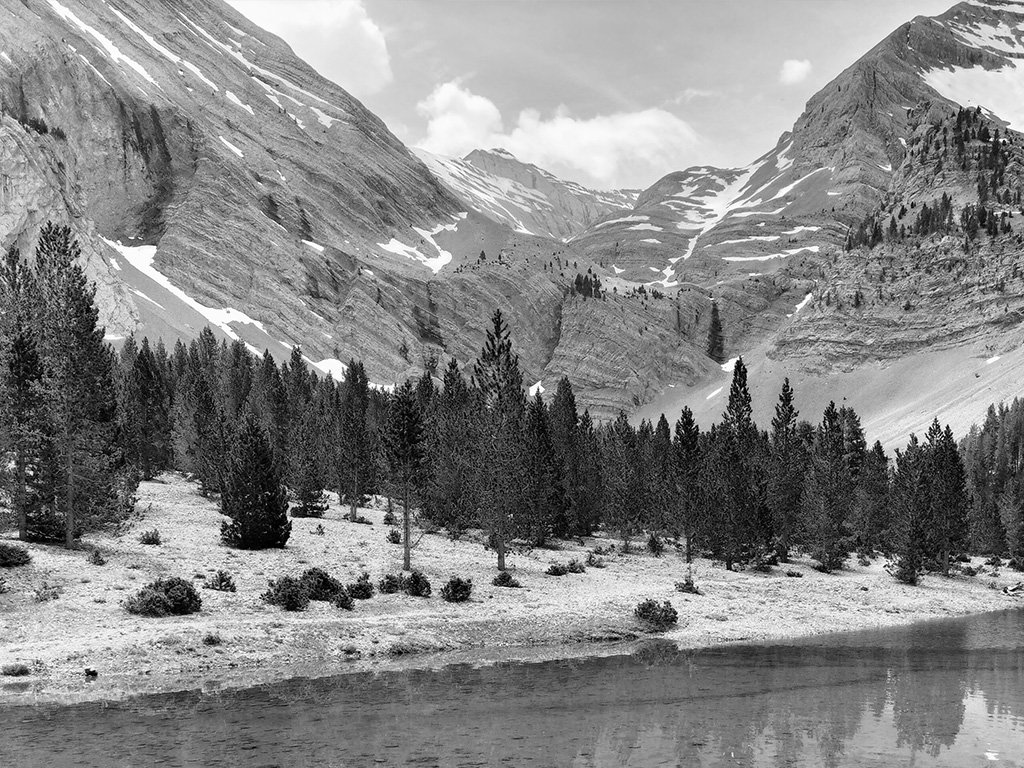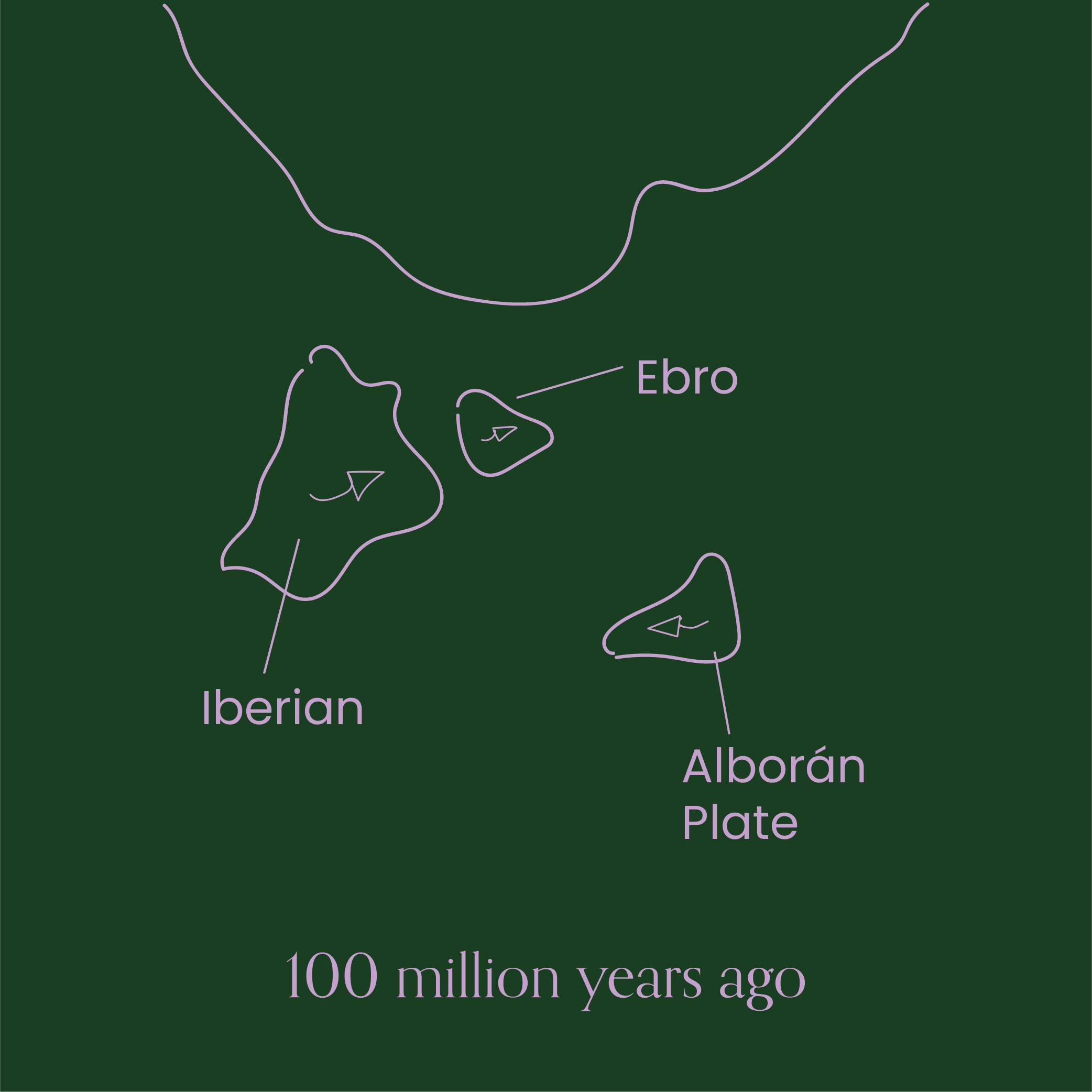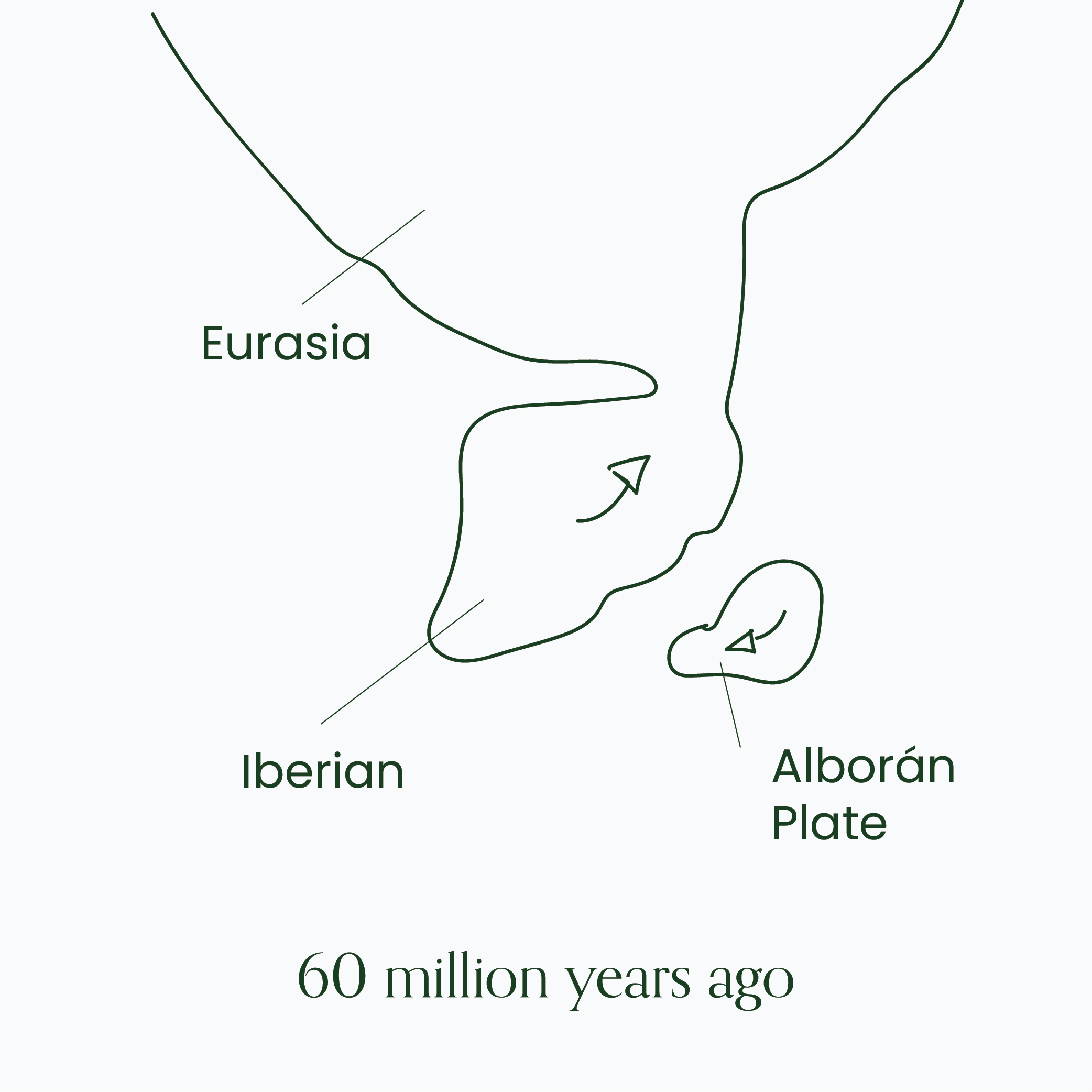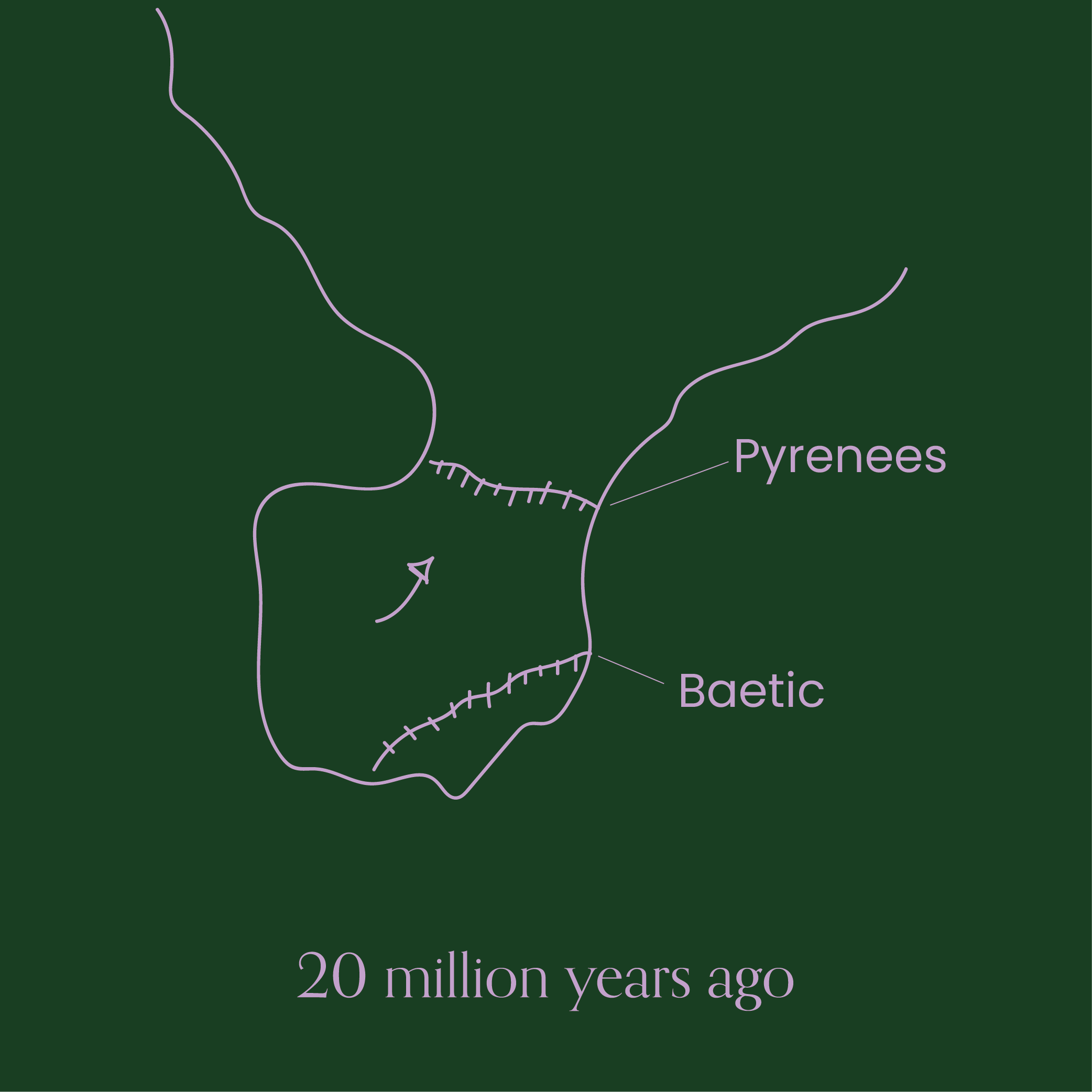Mountain lakes are not seen for their true nature
Ibón de plan is one of the many mountain lakes in the Spanish Pyrenees. The 430 Km long mountain chain of the Pyrenees you can see around this glacial lake was formed 65 million years ago by the collision of the tiny Iberian and the Eurasian plate. Ibón de plan also goes by the name of Basa de la Mora
The lake lies in the Plan municipality, in the province of Huesca. At 1910 meters high Basa de la Mora gets fed by the melting snow of the peaks around it, such as Pico Cotiella (2.912 m), Punta de Armeña (2822 m), Punta de las Neiss (2751 m) and Cotielleta (2731 m).
The legend says people with a pure soul who wash their faces in its waters on the night of San Juan will see a beautiful blackberry dancing a magical and enthralling dance.
According to the Pyrenean Climate Change Observatory, lakes such as Ibón plan are very vulnerable to climate change. The observatory says about these delicate ecosystems:
“The characteristics of these lakes and peatlands (high altitude, solar and UV radiation, ultraoligotrophy due to the lack of nutrients, very diluted waters, low temperatures, presence of an ice layer for several months, etc.) make them very sensitive to climatic changes (mainly changes in temperature and rainfall regimes, winds, etc). On the one hand, they are "sentinels" of the changes that are happening in the Pyrenean territory, given their great sensitivity to climatic and environmental fluctuations and other alterations in their reception basins. On the other hand, they archive in their sediments the complex signals of the landscape, the aquatic system and the biological and abiotic processes and as well as how they have evolved in the last centuries or millennia.
For millennia these ecosystems have sustained complex biodiversity, served as carbon sinks and provided water resources, habitats for grazing and more recently for tourism purposes. During the last decades, the economy of many mountain areas has become increasingly dependent on tourist activities, mainly related to winter sports and summer hiking. Some of the unique elements of the high mountains such as glaciers, lakes, peat bogs and alpine tundra ecosystems are dynamic elements of local economies, with variable protection figures and conservation measures in the different Pyrenean territories. The high mountain is the granary of water, the power plant and the playground of all the Pyrenean territories, a region with growing needs for water and energy resources for agricultural and human consumption.
The conservation of these ecosystems within the framework of sustainable development of the mountain ecosystem is, at the same time, a challenge and an opportunity to become aware of the effects of global change in territories, considered pristine.”
The lungs of Ibón de Plan are the mountains from which the lake draws the snow that composes its mass, and the legs are all the paths the water takes to arrive at the delta of the Ebro. Ibón de Plan plays a vital role in the Ebro watershed and other 1000 lakes. It feeds the lands it passes with water, growing the vegetation.
The lake hosts an entire ecosystem from the microorganisms and frogs that live in the water to the animals and cattle that come to drink. The rocks protect the lizards that live under and the moss that reside on top. My trees need to be solid and resistant to hold the soil. It’s a very delicate balance to maintain.
The challenges of Ibón de Plan
1. Climate Change ”The main expected impacts on high mountain lakes, peatlands and their reception basins are related to the alteration of their physical-chemical and biological characteristics in response to the variation in water availability and the increase in temperatures. At these elevations it is important not only the direct heating of the lake water, but also the duration of the ice cover of the lake and the snow mantle in the basin. Among other processes, are expected changes in the cycle of ice and thaw, in the type and abundance of certain communities and in the chemical composition of the water (alkalinity). Changes in the trophic status of high mountain lakes caused by climate change have been detected in most mountains of the world, associated with changes in the thermal regime and winds. The impacts of Climate Change in these Pyrenean ecosystems are mainly associated with changes in temperature regimes, and this effect is likely to accelerate markedly in the future. Some models predict that the surface water temperature of the lakes will increase by more than 10ºC during the 21st century, in line with available observations, exceeding the variations experienced in these lakes during the last 11700 years (Holocene).” source Pyrenean Climate Change Observatory.
Currently, the Blanes Centre for Advanced Studies (CEAB) is researching the changes in the flora of the lakes of the Pyrenees due to climate change.
2. Humanity Because of the easy accessibility of Ibón the Plan, the lake is very popular with tourists. From the village of Saravillo, a 14km well-maintained dirt road leads to a refuge from where you hike over singletrack in 30 minutes to the lake. By car, you have to pay 3 euros to enter the dirt road. In high season this singletrack feels like the Ramblas in Barcelona.
After arriving at the refuge, cars park anywhere and sometimes on top of burial sites dating back to prehistory, from the Neolithic to the Iron Age.
The peak pressure on the lake by visiting tourists disturbs the wildlife, and people leave trash and human faeces behind. Because swimming is not forbidden, their bodies leave a chemical trace in the water from sunscreen, deodorant, make-up, etc. This behaviour disturbs the delicate balance of the water system.
“During the last decades, the economy of many mountain areas has become increasingly dependent on tourist activities, mainly related to winter sports and summer hiking. Some of the unique elements of the high mountains such as glaciers, lakes, peat bogs and alpine tundra ecosystems are dynamic elements of local economies, with variable protection figures and conservation measures in the different Pyrenean territories. The high mountain is the granary of water, the power plant and the playground of all the Pyrenean territories, a region with growing needs for water and energy resources for agricultural and human consumption.” source Pyrenean Climate Change Observatory.
The question is if you connect to a natural habitat if you can quickly drive to the location, not making an effort. The visit becomes a fast food for Instagram pictures.
Currently, the Blanes Centre for Advanced Studies (CEAB) is researching the strategies to reduce plastic pollution in mountain ecosystems due to human access to the mountains.
Opportunities for change
The non-human persona of Ibón de Plan is not just talking to the local tourist industry. The lake can is an example of how we deal with nature. Opportunities for change may include:
Local:
Regulate visiting Ibón de Plan.
Provide signalling.
Educate visitors about the lake and about the impact they have on their visit.
Make people really connect to the lake and the Plan municipality.
Look into ways where the local municipality can economically benefit from sustainable tourism.
Leisure industry:
AirBnB and Booking.com, among others, create awareness about natural habitats and how to behave in places like Ibón de Plan.
Outdoor brands such as The North Face to look deeper into sustainability and take the extra mile to protect the nature where their customers are roaming
Orbea, Specialized and other brands that make mountain bikes to create more awareness in the areas where they bike, slow down and pay attention to natural life.
Nivea, L´Oreal and others could change the ingredients of their creams in a way they don´t harm nature.
Focus on more local tourism and travelling by train and other public transport to reduce pollution from flying.
Global:
Banks and funds investing in non-polluting industries
Using global knowledge and connection to improve local environmental situations
Develop ways of steering away of plastic use
With love,
Ibón de plan AKA Basa de la Mora
The Non-human persona of Ibón de Plan was created in collaboration with students of the co-design minor program of the University of Applied Sciences Utrecht facilitated by the Fundamentals Academy.
Thanks to Marta Olcoz of the Ayuntamiento of Ainsa, Jorge Ruiz de Eguilaz from Zona Zero Pirineos and Isabel Santolaria Fernández from Osole Visual for being part of this co-design experience and providing local knowledge.
Special thanks to the co-design minor students Tatiana Levi Tutte, Georgi Furnadzhiev, Nadège Martins Fortes, Dana Tinsky Roif & Merun Gugelmann for the great work.
More about Non-human personas
The role of Non-human personas in your organisation and community













